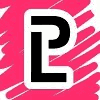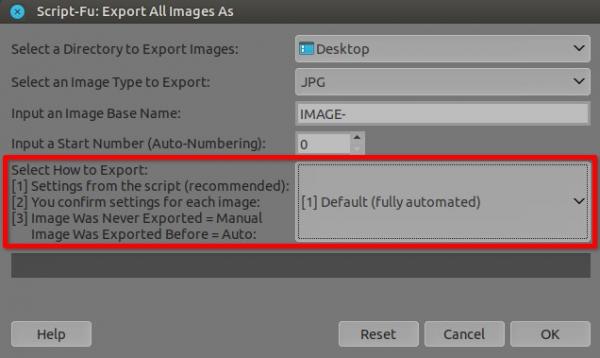| Welcome, Guest |
You have to register before you can post on our site.
|
| Forum Statistics |
» Members: 5,043
» Latest member: SandraJat
» Forum threads: 7,764
» Forum posts: 42,166
Full Statistics
|
| Latest Threads |
Palettes
Forum: General questions
Last Post: sallyanne
1 hour ago
» Replies: 2
» Views: 126
|
Chuck Henrich interactive...
Forum: Extending the GIMP
Last Post: MrsP-from-C
6 hours ago
» Replies: 1
» Views: 130
|
Help and advice with this...
Forum: General questions
Last Post: denzjos
9 hours ago
» Replies: 7
» Views: 238
|
DOSBox-X release January ...
Forum: Other graphics software
Last Post: rich2005
Yesterday, 09:20 AM
» Replies: 1
» Views: 114
|
3.0.6 appimage crash on R...
Forum: Alternate Gimp packagings
Last Post: rich2005
Yesterday, 08:38 AM
» Replies: 1
» Views: 126
|
Menus in 3.0
Forum: General questions
Last Post: rich2005
01-02-2026, 10:28 AM
» Replies: 1
» Views: 184
|
ExifToolGUI and ExifTool ...
Forum: Other graphics software
Last Post: denzjos
01-02-2026, 08:27 AM
» Replies: 11
» Views: 11,721
|
Wallpaper
Forum: Gallery
Last Post: diagramjamal1
01-01-2026, 10:17 PM
» Replies: 3
» Views: 2,833
|
Pattern Seamstress Kaleid...
Forum: Gallery
Last Post: diagramjamal1
01-01-2026, 09:59 PM
» Replies: 6
» Views: 5,621
|
cursor is a 'brush' that ...
Forum: General questions
Last Post: wklaus
01-01-2026, 03:46 PM
» Replies: 4
» Views: 321
|
|
|
 Batch export all opened images at once V2 (more options)
Batch export all opened images at once V2 (more options) |
|
Posted by: PixLab - 12-09-2023, 08:51 AM - Forum: Extending the GIMP
- No Replies
|
 |
Related to this one > https://www.gimp-forum.net/Thread-Export...MP-at-once ,
if it's your first time here, this script is an .scm to put in the scripts folder and it will export ALL opened images at once (batch export) to the format you chose like JPG, WebP, PNG, TIFF, BMP, and even export animation and BigTiff,
yes all your OPENED images at once! (click on the link above to see used cases  ) )
What's new in version 2? and the last! (delete the previous file (sg-save-all-open-a.scm), although I did change the declaration so both could work side by side)
You can control your inter-action.
> Fully auto,
> Fully Manual
> or use the latest settings used per image in fully auto (you have to RTM, though, for that last option)
Oh.. and last but not least I also wrote a manual (ReadTheManual) with screenshots 
And few other updates like BigTiff is accessible as well as animated WebP (explained at the end of the RTM), etc...
Download:
 pxl-export-all-images-as.7z (Size: 271.91 KB / Downloads: 957)
pxl-export-all-images-as.7z (Size: 271.91 KB / Downloads: 957)
After Rich2005 inspiration, this second version is due to Ofnuts who did try to put me on the right path (pun non intended) 

|

|
|
| Transparent objects |
|
Posted by: kikateadrunker - 12-09-2023, 03:32 AM - Forum: General questions
- Replies (4)
|
 |
ENG
Hello, forum people! 
I’ll tell you about a situation that I can’t figure out without the help of experts in this topic: I tried to cut out a glass, but couldn’t make it transparent for the background on which I placed it 
Can anyone tell me how to place transparent objects while maintaining their transparency?
I would be very grateful for your help in this matter!
РУ
Привет, обыватели форума! 
Расскажу о ситуации, с которой не смогу разобраться без помощи знатаков в этой теме: Попытался вырезать стакан, но не смог сделать его прозрачным для фона, на который его поставил 
Кто может подсказать, как можно ставить прозрачные объекты, при этом, сохраняя их прозрачность?
Буду очень благодарен за вашу помощь в этом вопросе!
УКР
Привіт, люди форуму! 
Спробував вирізати склянку, але не зміг зробити її прозорою для фону, на яку її поставив 
Хто може підказати, як можна ставити прозорі об'єкти, при цьому, зберігаючи їх прозорість?
Буду дуже вдячний за вашу допомогу у цьому питанні!
|

|
|
 RUN-WITH-LAST-VALS in Script-Fu is not what you might think
RUN-WITH-LAST-VALS in Script-Fu is not what you might think |
|
Posted by: PixLab - 12-09-2023, 01:49 AM - Forum: Scripting questions
- No Replies
|
 |
This RUN-WITH-LAST-VALS gave me a hard time, thus this is what I discovered on how it behaves (Related to this thread)
RUN-WITH-LAST-VALS Works per image session (ID would be correct), RUN-WITH-LAST-VALS cannot be transmitted to another opened image.
Thus if you have a bunch of images opened, you cannot run first RUN-INTERACTIVE on the first image to export and then RUN-WITH-LAST-VALS for the other images, thinking it will use the last settings you did use on the first image... That Will Not Work
How it works?
Example I want to export 5 opened images as JPG, but previously I did exported [Image 1] and [Image 3], the RUN-WITH-LAST-VALS will run like RUN-NONINTERACTIVE using the last values it found in the Image's session/ID in [Image 1] and [Image 3]
But will run RUN-INTERACTIVE for image [Image 2], [Image 4] and [Image 5], because there is no history in those images' session/ID of an export (whatever type of "Export")
There is also a "caveat", you export a second time but with another image/file type,
For example you did export all your images as PNG first, but you want also to export a second time as WebP to put on your website.
If you chose RUN-WITH-LAST-VALS, it won't ask you any question this second time it will run as RUN-NONINTERACTIVE for the WebP (or any other type) because in the image's session/ID it's "marked" as already exported...
But I don't know were RUN-WITH-LAST-VALS takes the values from PNG to transfer to WebP, because they are quite different, especially the options...
Anyway, I hope this help the first timer with Script-fu to not struggle to understand that behavior, like I did
|

|
|
| GIMP Files stuck on PAINT XCF |
|
Posted by: RabSmith - 12-07-2023, 09:30 PM - Forum: General questions
- Replies (4)
|
 |
Hya all you cute-n-cuddly GIMP users.
I have been using GIMP for about a decade and I love it, however recently after doing a clean install on my desktop PC, ALL my XCF files [previously all GIMP files] are now all PAINT XCF files and will not transfer to, or come up in, my GIMP list of 'open' files.
Try as I might, I just cannot convert my XCF files to the GIMP format I require.
It would be very useful if someone can assist me on this one, and let me access my artwork.
kind regards, Rab Smith.
|

|
|
| Hi- New user 2.10.36 |
|
Posted by: theycallmejayne - 12-07-2023, 09:29 PM - Forum: General questions
- Replies (5)
|
 |
HI all,
I am new to GIMP. Been a PS user but can no longer afford the way it's going so installed gimp 2.10.36 on C in a win 11 64 bit machine and GIMO portable on an external SSID on a win 10 64 bit machine, both laptops.and then
Both are set up to my preferences. I am at the moment interested in logo creation and photo manipulation for website use
Trawled you tube and came across Davies Media Design and thought buying the masters course would be a good choice. Turns out three quarters of the resources are missing and have been, according to the comments, for some years. DMD doesn't answer emails so somewhat disappointed. Sorry if this is a DMD forum, if it is maybe the dude will read this and send me the missing resources.
Guess I won't be getting the Udemy Certificate from the video alone.
My current issues are:
I cant' seem to get stroking text to work. I appreciate that its a different way of doing things but I can't get it to work to my satisfaction and its a somewhat convaluted way of doing it. Maybe theres a plugin out there.
I also can't get text on a circle to work. Text on the top part of the arc is fine but text on the lower places on the top right corner and i cant flip it to read upright. However, despite copying logo by nick every step, i conclude that i must be missing something.
Does anyone know of an online teacher who someone as inexperienced as i can follow and the instructions work please? Or is there a plug in for text on a circle?
I also now have Inkscape and I will say that as far as I am concerned it is far superior to Illustarator in ease of use.
Hopefully someone will read this and tell me where I am going wrong.
THanks for reading.
|

|
|
| Flattening Fades Images |
|
Posted by: Pink Peony - 12-07-2023, 04:40 AM - Forum: General questions
- Replies (7)
|
 |
I have spent an embarrassing amount of time creating high quality PNG images which I have layered into worksheets I plan to sell. Now I need to flatten my pages.
When I use Image>Flatten, my beautiful images look faded. The drop shadows nearly disappear altogether. The loss of quality is dramatic. I've tried increasing the Quality slider in the Export popup from 90 to 100 with no noticeable improvement.
What do I do?
I am using GIMP 2.10.36.
Thank you!
|

|
|
|